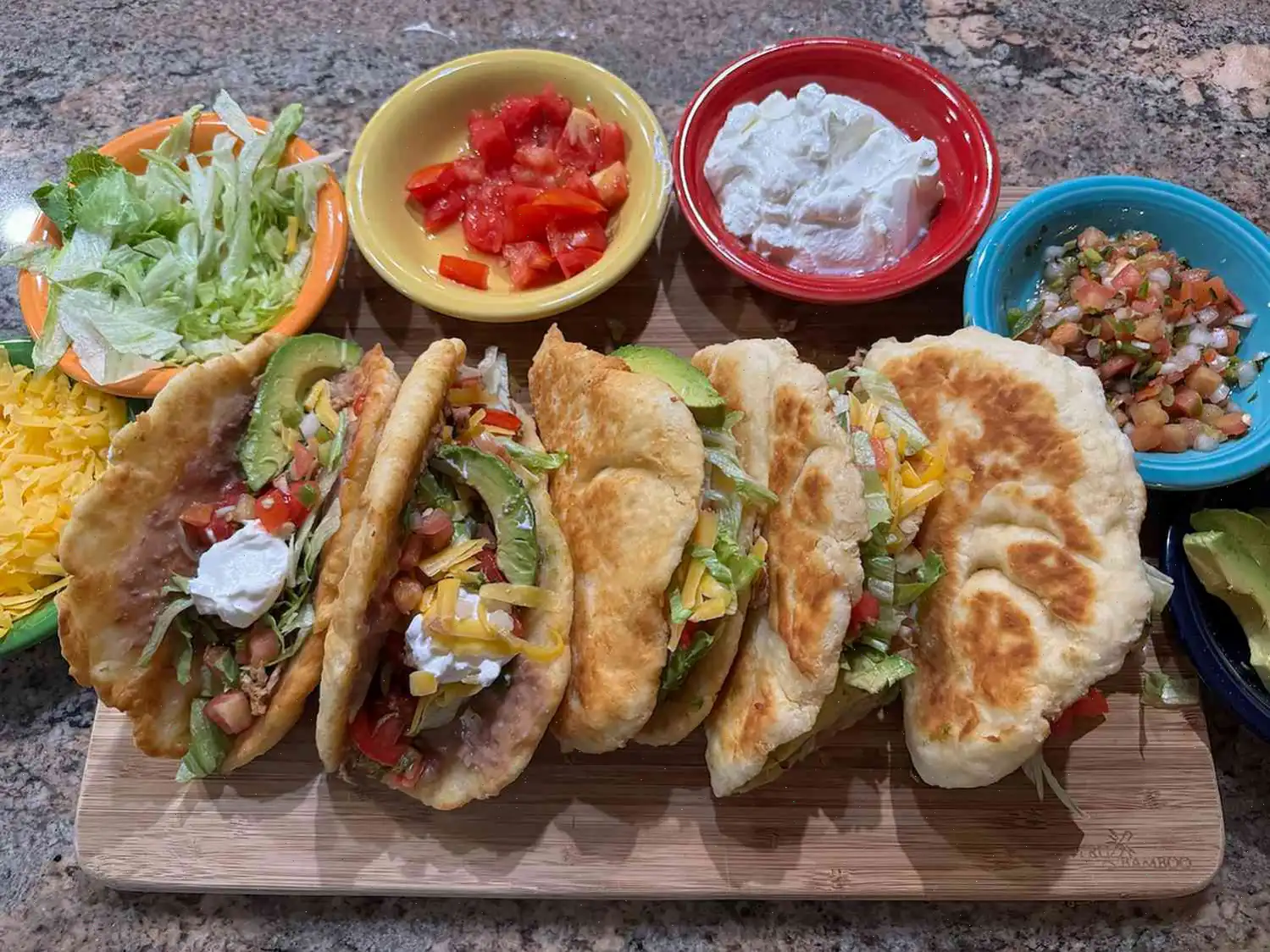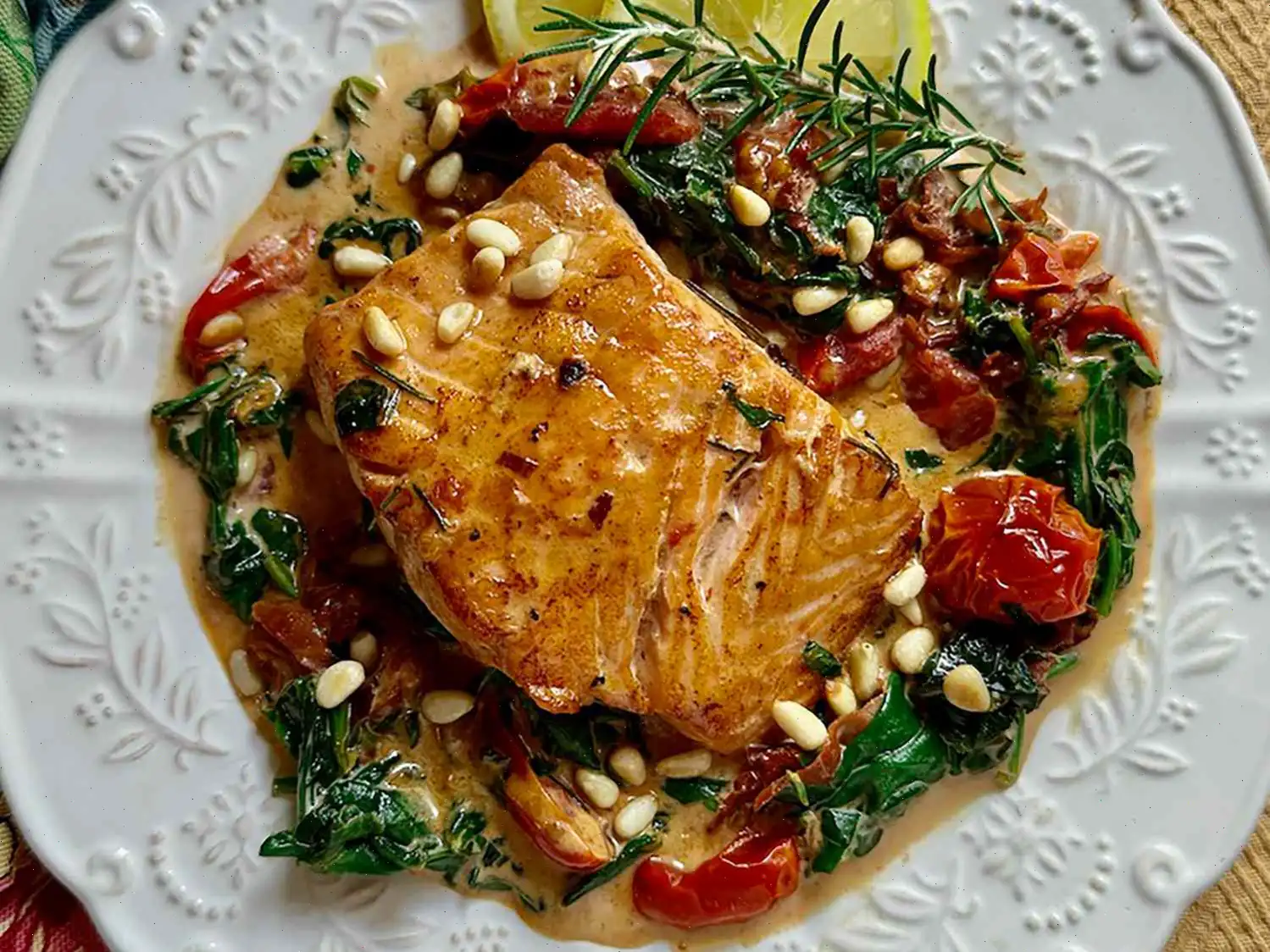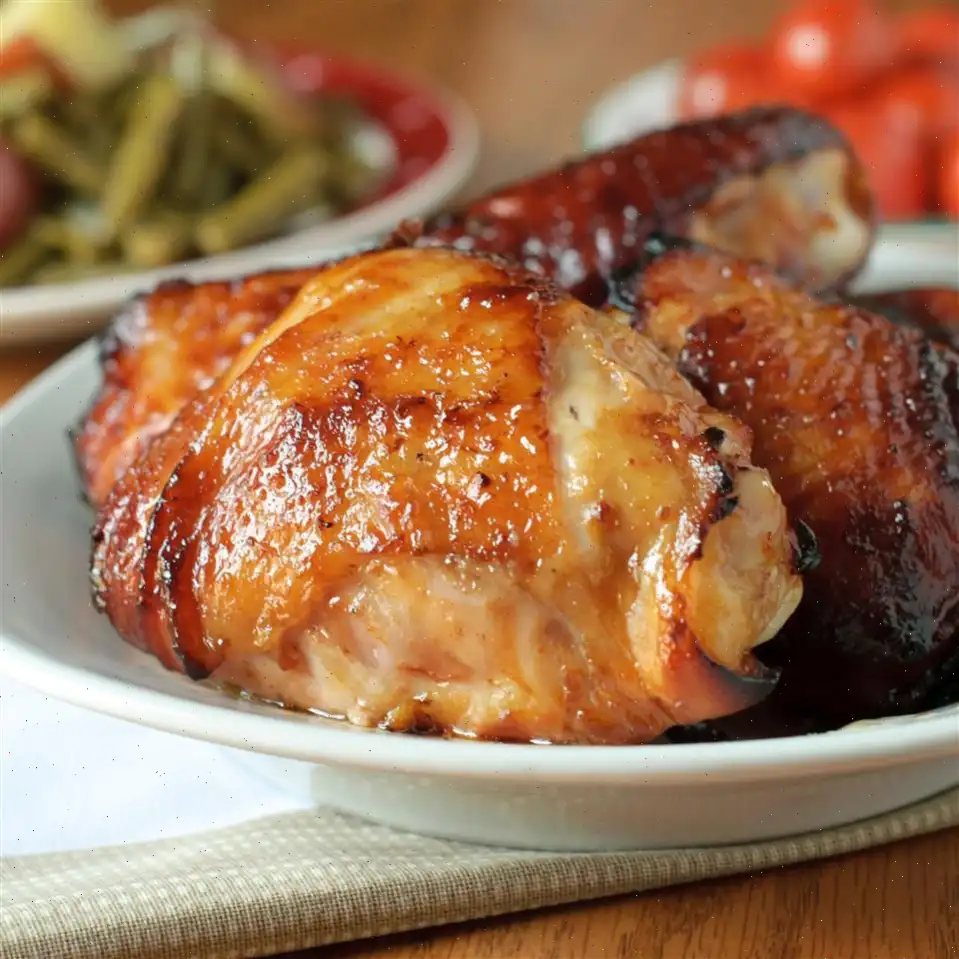
Cannellini Bean Salad with Pesto Recipe
Ingredients
- 2 (1-inch-thick) slices sourdough or French bread
- 2 tablespoons extra-virgin olive oil
- 1 red bell pepper - stemmed, seeded, and quartered
- 1 small red onion, cut into 3/4-inch slices
- 1 small zucchini, halved lengthwise
- 1 lemon, halved
- 1 head garlic, halved crosswise
- 2 cups packed fresh parsley leaves
- 2/3 cup walnuts, toasted
- 1/2 cup grated Parmesan cheese
- 1/2 teaspoon salt
- 1 (15 ounce) can cannellini beans, drained and rinsed
- 1 cup cherry or grape tomatoes, halved
Directions
Step 1: Preheat your outdoor grill to medium heat (350F to 375F or 175C to 190C). Brush both sides of the bread slices with 2 tablespoons of olive oil. Lightly oil the grill grates to prevent sticking.
Step 2: Place the bread slices, red bell pepper, onion, zucchini, lemon, and garlic, cut sides down, on the grill. Close the grill lid to cook over direct heat.
Step 3: Grill the bread, turning halfway through, for about 4 minutes or until toasted. Grill the lemon and garlic for 4 to 6 minutes until the cut sides are lightly charred. Grill the zucchini, bell pepper, and onion, turning halfway through, for about 5 to 6 minutes for zucchini and 8 to 10 minutes for bell pepper and onion, until tender and slightly charred.
Step 4: Once cool enough to handle, squeeze the garlic cloves out of the garlic halves. Rub a few of the garlic cloves over both sides of the toasted bread. Reserve about 3 cloves of garlic for the pesto and set aside the remaining garlic for another use. Cut or tear the toasted bread into bite-sized pieces.
Step 5: For the pesto, pulse the fresh parsley, toasted walnuts, grated Parmesan cheese, salt, reserved garlic, and the juice from the grilled lemon in a food processor or blender until finely chopped.
Step 6: While the processor is running, slowly pour in the remaining 1/2 cup of olive oil in a thin stream until the pesto mixture becomes smooth and well-combined.
Step 7: Cut the grilled bell pepper, onion, and zucchini into bite-sized pieces. Add them to a large bowl along with the croutons, cannellini beans, and halved cherry or grape tomatoes. Toss everything gently to combine.
Step 8: Arrange the salad on a serving platter. Drizzle the pesto over the salad and toss again to coat evenly before serving.
Toasting Walnuts (Optional): Preheat your oven to 350F (175C). Spread the walnuts in a single layer on a baking sheet and toast them in the preheated oven for 7 to 10 minutes until golden brown and fragrant. Let cool before using in the recipe.
Nutrition Facts (per serving):
| Calories | 292 |
| Total Fat | 12g (16% Daily Value) |
| Saturated Fat | 2g (12% Daily Value) |
| Cholesterol | 6mg (2% Daily Value) |
| Sodium | 529mg (23% Daily Value) |
| Total Carbohydrate | 39g (14% Daily Value) |
| Dietary Fiber | 8g (29% Daily Value) |
| Total Sugars | 7g |
| Protein | 12g (25% Daily Value) |
| Vitamin C | 102mg (113% Daily Value) |
| Calcium | 185mg (14% Daily Value) |
| Iron | 5mg (26% Daily Value) |
| Potassium | 713mg (15% Daily Value) |

In this Cannellini Bean Salad with Pesto, grilled sourdough meets homemade pesto, charred fresh veggies, cannellini beans, and walnuts. A perfect blend of flavors that delivers both freshness and heartiness. This dish is ideal as a side or light dinner, featuring a balance of textures and flavors. But beyond its mouth-watering taste, the salad has an interesting history and cultural significance.
History of Cannellini Beans and Pesto
The combination of beans and pesto is a relatively modern concept, but both ingredients have deep roots in Italian cuisine. Cannellini beans, originating from Italy, have been grown in Tuscany for centuries. These beans are known for their creamy texture and nutty flavor, making them a perfect complement to vibrant sauces like pesto.
Pesto itself hails from the region of Liguria, in northwestern Italy, where it was traditionally made using basil, garlic, pine nuts, Parmesan cheese, and olive oil. The name "pesto" comes from the Italian word "pestare," meaning "to crush" or "to pound," referring to the method of preparation in a mortar and pestle. Over time, pesto has become one of Italys most famous culinary exports, inspiring countless variations beyond the traditional basil-based version.
Regional Features and Variations
This particular recipe takes inspiration from the Mediterranean flavors of southern Europe, where grilled vegetables and fresh herbs play a significant role in daily cooking. The addition of cannellini beans adds a Tuscan twist, bringing a creamy texture that balances out the sharpness of the grilled vegetables and the richness of the pesto. The use of walnuts in the pesto is another variation, adding a unique nutty flavor that elevates the sauce.
In Italy, it's common to find similar salads featuring beans, such as the classic Insalata di Fagioli. However, the grilled vegetables and the crunchy sourdough croutons in this recipe set it apart, offering a more rustic and hearty experience compared to simpler versions of bean salads.
What Sets It Apart from Similar Dishes?
The Cannellini Bean Salad with Pesto is distinctive due to its blend of textures and flavors. Unlike other bean salads, which can be more straightforward with their use of canned or boiled beans, this dish incorporates the dynamic flavors of grilled vegetables, which add smokiness and depth. The use of grilled sourdough as croutons is another key feature, offering a satisfying crunch that contrasts beautifully with the softness of the beans and pesto. The pesto itself, made with freshly grilled garlic and lemon, also sets this salad apart from typical pesto recipes, enhancing the overall flavor profile.
Where Is This Salad Typically Served?
This salad is perfect for a variety of occasions, whether it be a casual family dinner or a more sophisticated gathering. Its commonly served as a side dish to complement grilled meats or seafood, making it a great option for summer barbecues or Mediterranean-inspired meals. The combination of beans and vegetables also makes it a fantastic vegetarian main course. In Italy, a similar bean-based salad might be served as a light lunch or appetizer, often accompanied by a glass of crisp white wine or a light ros.
Interesting Facts
- Health Benefits: Cannellini beans are an excellent source of plant-based protein and fiber, making them a nutritious addition to any meal. Combined with the antioxidant-rich pesto, this salad is not only delicious but also packed with nutrients.
- Flexibility: While this recipe calls for walnuts, you can easily substitute them with pine nuts or almonds, depending on your taste preferences. The same goes for the vegetables feel free to experiment with others like eggplant or cherry tomatoes.
- Grilling Tradition: Grilling is a cherished cooking method in many Mediterranean countries. The smoky flavor it imparts to the vegetables enhances their natural sweetness and makes them the perfect complement to the bold flavors of the pesto.
- Perfect for Leftovers: This salad can be enjoyed the next day as well. The flavors tend to meld together even more, and the dish can be eaten cold or at room temperature.
Whether you're looking for a side dish, a main course, or a fun way to incorporate beans into your diet, this Cannellini Bean Salad with Pesto is an excellent choice. With its delightful mix of fresh ingredients, regional history, and versatility, it's sure to become a new favorite in your culinary repertoire!








